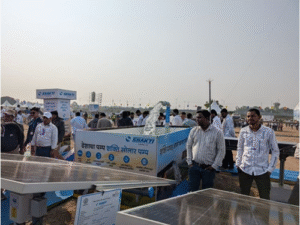Scientists at the Indian Institute of Technology (IIT) Gandhinagar, Gujarat, made a significant breakthrough by developing an ultra-thin material just one nanometre thick—nearly 100,000 times thinner than a sheet of paper.
Composed of boron atoms, these nanosheets were created using an innovative solution-based method.
Scientists dissolved a boride compound in water, allowing it to crystallize over a specific duration, forming ultra-thin sheets.
These sheets exhibit exceptional electrical, thermal, and mechanical properties.
Researchers are now exploring practical uses of these nanosheets in:
- Next-Generation Batteries:
Enhancing energy storage efficiency and lifespan.
Possible applications in lithium-ion and solid-state batteries.
- Nanocatalysts:
Accelerating chemical reactions in industrial and environmental processes.
Potential to improve fuel cells and hydrogen production.
- Electronic Devices:
Could be used in flexible electronics, supercapacitors, and advanced semiconductors.
- Water Purification & Sensors:
The unique properties may aid in filtration and pollutant detection.
First-ever nanosheets made using boron atoms in this manner.
Could lead to high-performance energy solutions and more efficient catalytic systems.
Marks a major advancement in Indian nanotechnology research with global implications.
The ongoing research at IIT Gandhinagar is bringing India to the forefront of nanotechnology-driven energy solutions, paving the way for cutting-edge innovations.







